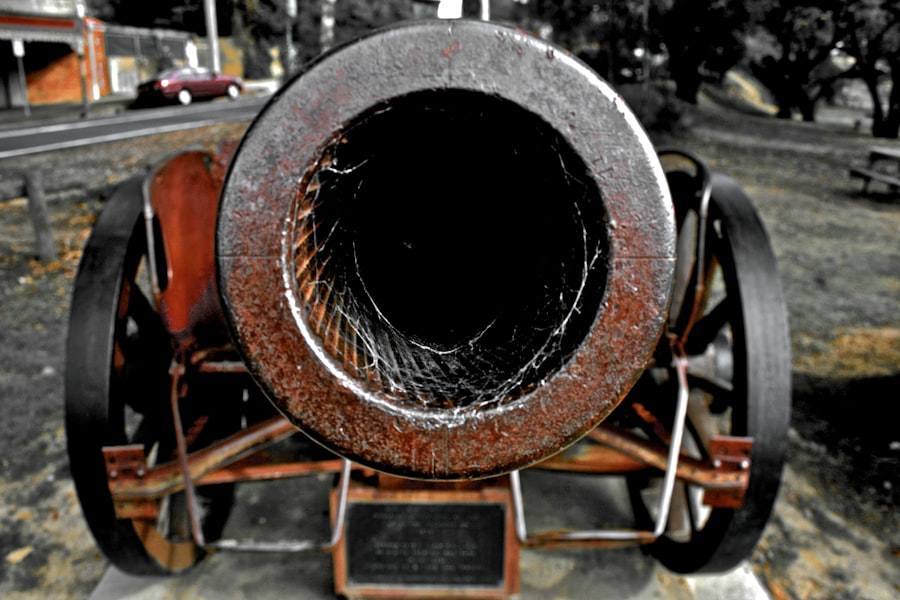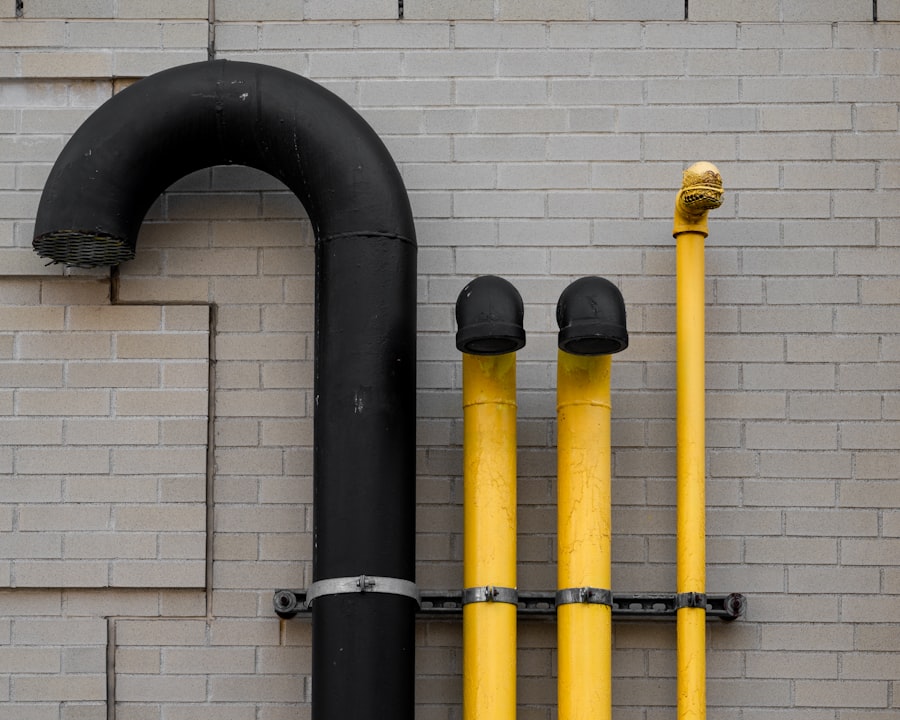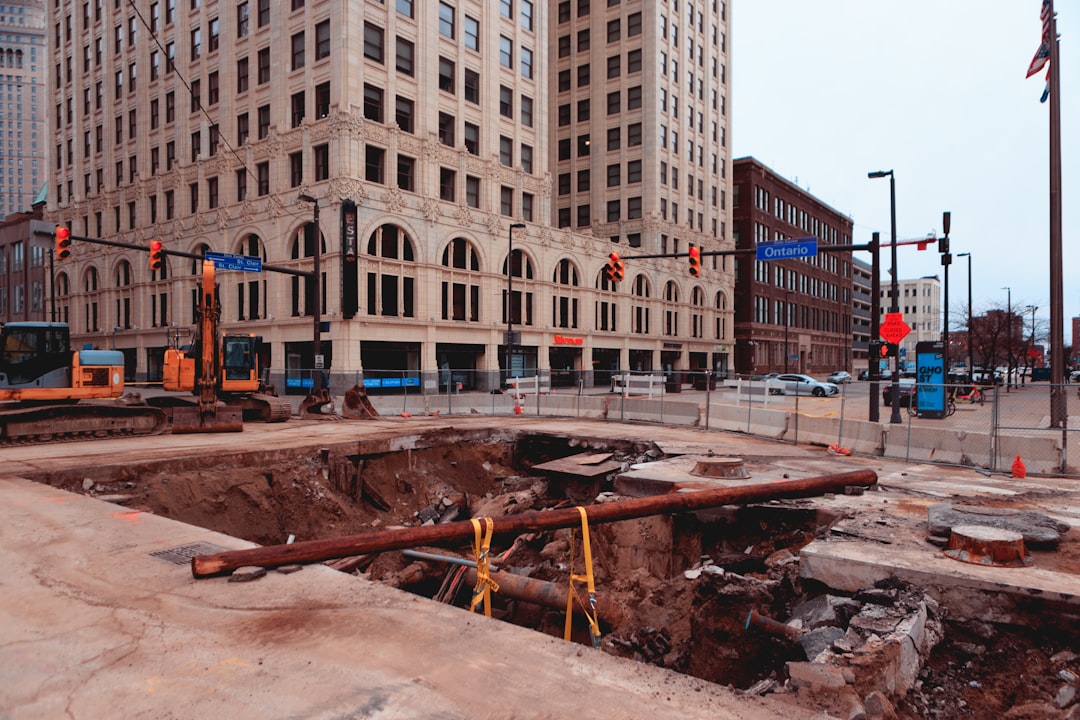The steam system in New York City is a vast and intricate network that has been in operation for over a century. It serves as a critical infrastructure component, providing heating and hot water to thousands of buildings across the city. The system is primarily managed by Con Edison, which operates one of the largest steam distribution networks in the world.
This network consists of underground pipes that transport steam generated at centralized plants to various commercial and residential buildings. The steam is used for heating, sterilization, and even power generation, making it an essential utility for many New Yorkers. The steam system operates under high pressure, which allows it to efficiently travel long distances without significant heat loss.
However, this high-pressure environment also presents unique challenges and risks. The pipes are typically made of steel and are insulated to minimize heat loss and protect the surrounding environment. Over time, factors such as corrosion, wear and tear, and external environmental conditions can compromise the integrity of these pipes.
Understanding the complexities of the NYC steam system is crucial for both residents and building managers, as it helps them recognize the importance of maintenance and the potential risks associated with steam pipe failures.
Key Takeaways
- The NYC steam system provides heat and hot water to many buildings in the city through a network of underground pipes.
- Common causes of steam pipe failures include corrosion, age, and external damage from construction or excavation.
- Signs of a potential steam pipe failure include hissing or banging sounds, visible leaks or discolored steam, and a sudden drop in steam pressure.
- In the event of a steam pipe failure, it is important to evacuate the area, call 911, and notify Con Edison immediately.
- Regular inspections and maintenance of steam pipes are crucial for preventing failures and ensuring public safety.
Common Causes of Steam Pipe Failures
Steam pipe failures can occur due to a variety of reasons, each contributing to the deterioration of the system’s integrity. One of the most common causes is corrosion, which can be exacerbated by the high temperatures and pressures within the pipes. Over time, the protective coatings on the pipes can wear away, allowing moisture to seep in and initiate rust formation.
This corrosion weakens the metal, making it more susceptible to cracks and leaks. Additionally, the presence of impurities in the steam can accelerate corrosion, leading to more frequent failures. Another significant factor contributing to steam pipe failures is ground movement.
In a bustling city like New York, construction activities, soil erosion, and even natural settling can cause shifts in the ground that impact underground pipes. These movements can create stress points along the pipes, leading to fractures or complete breaks. Furthermore, thermal expansion and contraction due to temperature fluctuations can also place additional strain on the pipes, increasing the likelihood of failure.
Understanding these common causes is essential for identifying potential issues before they escalate into serious problems.
Signs of a Potential Steam Pipe Failure

Recognizing the early signs of a potential steam pipe failure can be crucial in preventing more extensive damage and ensuring safety. One of the most noticeable indicators is an unusual increase in steam or water leaks around building foundations or in basements. If residents or building managers observe steam escaping from cracks or openings in the ground, it may signal a breach in the steam pipe system.
Additionally, a sudden drop in heating efficiency or inconsistent heating throughout a building can also point to underlying issues with the steam pipes. Another sign to watch for is unusual noises emanating from the heating system. Gurgling or banging sounds can indicate trapped air or water within the pipes, which may suggest that there is a blockage or other malfunction occurring.
Furthermore, if there are sudden spikes in energy bills without a corresponding increase in usage, it could indicate that the steam system is working harder than usual due to inefficiencies caused by pipe damage. Being vigilant about these signs can help residents and building managers take proactive measures before a failure occurs.
Steps to Take in the Event of a Steam Pipe Failure
| Steps to Take in the Event of a Steam Pipe Failure |
|---|
| 1. Evacuate the area immediately |
| 2. Call emergency services |
| 3. Do not attempt to touch or repair the steam pipe |
| 4. Stay away from the steam and any escaping steam |
| 5. Follow instructions from emergency responders |
In the unfortunate event of a steam pipe failure, immediate action is necessary to ensure safety and mitigate damage. The first step is to evacuate any individuals from the affected area, especially if there are signs of steam escaping or if there is a risk of burns from hot surfaces. It is essential to prioritize safety above all else; therefore, residents should avoid attempting to investigate or fix the issue themselves.
Instead, they should contact their building management or maintenance team immediately. Once safety has been ensured, it is crucial to report the incident to Con Edison or local authorities responsible for managing steam systems. Providing detailed information about the location and nature of the failure can help expedite response efforts.
In some cases, emergency services may need to be called if there are concerns about public safety or if individuals are trapped in an area affected by steam exposure. Following these steps can help minimize risks and ensure that professionals address the situation promptly.
Importance of Regular Inspections and Maintenance
Regular inspections and maintenance of steam pipes are vital for preventing failures and ensuring the overall safety of the system. Routine checks allow for early detection of potential issues such as corrosion, leaks, or structural weaknesses before they escalate into more significant problems. Building managers should establish a maintenance schedule that includes visual inspections, pressure tests, and assessments of insulation integrity.
By being proactive about maintenance, they can extend the lifespan of their steam systems and reduce the likelihood of costly repairs. Moreover, regular maintenance not only enhances safety but also improves energy efficiency. Well-maintained steam systems operate more effectively, reducing energy consumption and lowering utility costs for residents and businesses alike.
Additionally, adhering to maintenance schedules can help comply with local regulations and standards regarding steam system safety. Ultimately, investing time and resources into regular inspections pays off by ensuring reliable service and safeguarding public health.
NYC Regulations and Standards for Steam Pipe Safety

New York City has established stringent regulations and standards governing steam pipe safety to protect residents and infrastructure alike. These regulations are designed to ensure that steam systems are installed, maintained, and operated safely. The NYC Department of Buildings (DOB) oversees compliance with these regulations, which include requirements for regular inspections, proper installation practices, and adherence to safety codes.
This includes obtaining necessary permits for installation or modifications and maintaining accurate records of inspections and repairs. Failure to comply with these regulations can result in fines or legal repercussions, as well as increased risks associated with unsafe steam systems.
By understanding these regulations, building managers can better navigate their responsibilities and contribute to a safer urban environment.
How to Report a Suspected Issue with a Steam Pipe
Reporting a suspected issue with a steam pipe is crucial for ensuring timely intervention and preventing potential hazards. Residents who notice signs of a problem—such as unusual noises, leaks, or changes in heating—should first contact their building management or maintenance team. Providing detailed information about the observed issue will help facilitate a swift response.
If building management does not address the concern promptly or if residents feel that immediate action is necessary due to safety risks, they should report the issue directly to Con Edison or local authorities responsible for steam systems. This can typically be done through customer service hotlines or online reporting tools provided by utility companies. Residents should document their observations and any communications regarding the issue to ensure that all relevant information is available for investigation.
Potential Risks and Dangers Associated with Steam Pipe Failures
Steam pipe failures pose several risks that can endanger public safety and property. One of the most immediate dangers is exposure to high-pressure steam, which can cause severe burns or injuries if individuals come into contact with it. Additionally, when steam escapes from damaged pipes, it can create hazardous conditions such as scalding surfaces or reduced visibility due to vapor clouds.
Beyond physical injuries, steam pipe failures can also lead to significant property damage. Water damage from leaks can compromise structural integrity and lead to mold growth if not addressed promptly. Furthermore, disruptions in heating services can affect residents’ comfort during colder months, leading to further complications such as frozen pipes or health risks associated with inadequate heating.
Safety Precautions to Take When Near Steam Pipes
When individuals find themselves near steam pipes—whether in basements, utility rooms, or outdoor areas—certain safety precautions should be observed to minimize risks. First and foremost, it is essential to maintain a safe distance from exposed pipes that may be leaking steam or hot water. If there are visible signs of damage or leaks, individuals should avoid approaching these areas until professionals have assessed the situation.
Additionally, individuals should familiarize themselves with emergency procedures related to steam pipe failures within their buildings. Knowing how to evacuate safely and whom to contact in case of an emergency can make a significant difference in ensuring personal safety during an incident. Wearing appropriate protective gear when working near steam systems—such as gloves and goggles—can also provide an added layer of safety against potential hazards.
The Role of Con Edison in Maintaining Steam Pipe Safety
Con Edison plays a pivotal role in maintaining steam pipe safety throughout New York City by overseeing one of the largest steam distribution networks globally. The company is responsible for generating steam at its plants and distributing it through an extensive underground network of pipes that serve thousands of customers across various sectors. To ensure reliability and safety within this system, Con Edison conducts regular inspections and maintenance on its infrastructure.
In addition to routine maintenance efforts, Con Edison also invests in technology upgrades aimed at enhancing system efficiency and safety monitoring capabilities. This includes implementing advanced sensors that detect changes in pressure or temperature within the pipes, allowing for real-time monitoring of potential issues before they escalate into failures. By prioritizing safety measures and investing in infrastructure improvements, Con Edison demonstrates its commitment to providing reliable service while safeguarding public health.
What to Do if You Suspect a Steam Pipe Issue in Your Building
If residents suspect an issue with a steam pipe in their building, taking prompt action is essential for ensuring safety and preventing further complications. The first step is to communicate any concerns with building management or maintenance personnel immediately. Providing specific details about what has been observed—such as unusual noises or visible leaks—can help expedite response efforts.
If building management does not address the issue promptly or if residents feel that immediate action is necessary due to safety risks, they should report their concerns directly to Con Edison or local authorities responsible for managing steam systems. Documenting observations and communications regarding the issue will ensure that all relevant information is available for investigation purposes. By being proactive about reporting suspected issues with steam pipes, residents contribute to maintaining a safe living environment for themselves and their neighbors.
New York City’s steam pipe system is an integral part of the city’s infrastructure, providing heating and cooling to numerous buildings across Manhattan. This extensive network, which dates back to the late 19th century, is often hidden beneath the bustling streets, yet plays a crucial role in the city’s daily operations. For those interested in exploring more about the fascinating history and current state of NYC’s steam pipes, you can find a related article on the topic by visiting this page. This article delves into the engineering marvels and challenges associated with maintaining such a vast and aging system, offering insights into how it continues to serve the city efficiently.
WATCH THIS! The Real Cost of NYC Living: Your Wallet, Sanity, and Subway Survival Skills
FAQs
What are NYC steam pipes?
NYC steam pipes are a network of underground pipes that carry steam to heat and cool buildings in New York City. The steam is produced by Con Edison and is used for heating, hot water, and air conditioning.
How are NYC steam pipes maintained?
Con Edison regularly inspects and maintains the NYC steam pipe system to ensure its safety and efficiency. This includes repairing and replacing aging pipes, as well as monitoring for leaks and other issues.
What are the risks associated with NYC steam pipes?
There are potential risks associated with NYC steam pipes, including the possibility of leaks, explosions, and steam releases. These incidents can pose a danger to the public and surrounding infrastructure.
What should I do if I encounter a steam pipe leak or release?
If you encounter a steam pipe leak or release, it is important to move away from the area and notify authorities immediately. Steam releases can cause burns and other injuries, so it is crucial to avoid contact with the steam.
Are NYC steam pipes environmentally friendly?
NYC steam pipes are considered to be a relatively environmentally friendly way to heat and cool buildings, as they use steam produced from natural gas and other sources. This helps to reduce the reliance on fossil fuels for individual building heating systems.
